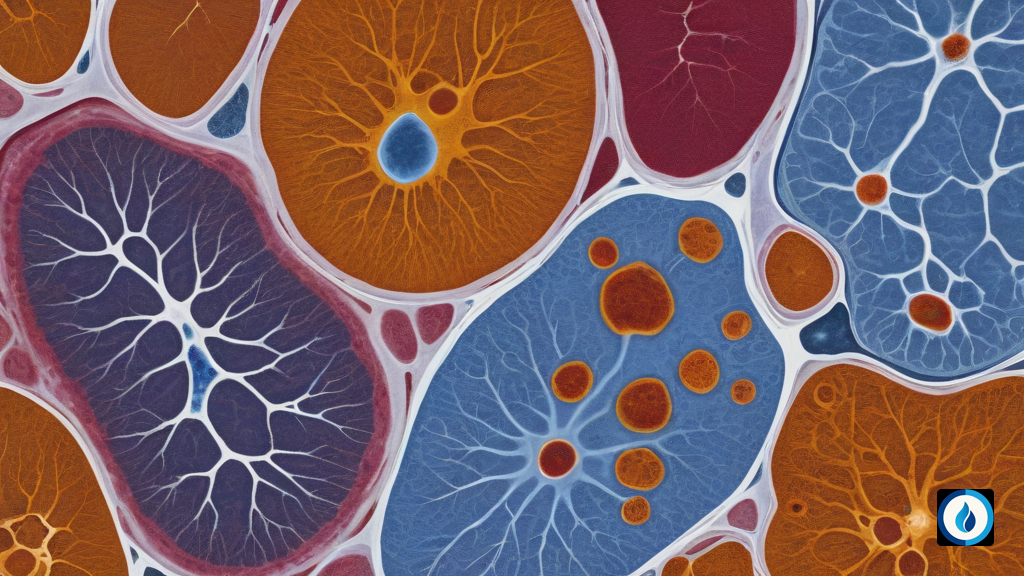Introduction
Decalcification is a crucial process in histology that involves the removal of calcium ions from bone tissue to enable the creation of thin sections for pathological examination. This process is necessary because the presence of calcium can make it difficult to cut and stain bone tissue, potentially compromising the quality of the histological slides.
Decalcification is commonly employed in the diagnosis and staging of various cancers, including breast, prostate, and lung cancers, which frequently metastasize to bone tissue. It is also essential for the accurate assessment of lymphomas, leukemias, and other conditions that affect the bone marrow.
Methods of Decalcification
There are two main methods of decalcification: chemical and chelating.
Chemical Decalcification
Chemical decalcification involves the use of strong acids, such as nitric acid and hydrochloric acid, to dissolve calcium salts and remove them from the tissue. These acids work rapidly, but they can also damage the morphology of delicate tissues and adversely affect subsequent ancillary testing, especially if DNA or RNA analysis is required.
Stomach acid is a milder chemical decalcifying agent that is less damaging to tissues compared to nitric and hydrochloric acids. However, it is also slower acting, which can prolong the decalcification process.
Chelating Decalcification
Chelating decalcification utilizes agents such as EDTA (ethylenediaminetetraacetic acid) to bind to calcium ions and remove them from the tissue. EDTA is a gentler method compared to chemical decalcification, and it is less likely to damage DNA and RNA, making it suitable for subsequent molecular testing.
Choosing a Decalcification Method
The choice of decalcification method depends on several factors, including the type of specimen, the desired speed of decalcification, and the specific downstream testing requirements.
For specimens that require rapid decalcification, such as those needed for urgent diagnosis, chemical decalcification using strong acids may be preferred. However, if the preservation of tissue morphology and nucleic acids is crucial for subsequent testing, chelating decalcification using EDTA is a better option.
It is important to note that different laboratories may have their own preferred decalcification protocols based on their specific workflow and the types of specimens they receive.
Impact of Decalcification on Staining
Decalcification can have varying effects on staining, depending on the method used and the specific antibodies or stains employed.
Immunohistochemistry (IHC)
IHC is a widely used technique for identifying specific proteins in tissue sections. Some studies suggest that decalcification can enhance IHC staining by facilitating antibody penetration, while others indicate that it may diminish staining intensity, particularly for certain antibodies.
It is recommended to validate IHC assays on decalcified tissues to ensure that the staining results are reliable and reproducible.
Predictive Markers
Predictive markers, such as ER/PR, HER2, and PD-L1, are crucial for guiding treatment decisions in various cancers. These markers are often assessed using IHC, and it is essential to ensure that decalcification does not adversely affect their staining.
Manufacturers of FDA-cleared predictive marker tests generally recommend against performing these tests on decalcified tissues. However, if decalcification is unavoidable, it is advisable to validate the staining results to demonstrate that they are comparable to those obtained from non-decalcified tissues.
Enzyme Histochemistry
Enzyme histochemistry is used to detect specific enzymes in tissue sections. Acid decalcification can inhibit the staining of certain enzymes, such as esterases and TrAP, while chelating decalcification using EDTA does not appear to have such adverse effects.
Molecular Testing
Molecular testing, including NC2 harbortization, cytogenetics, and FISH (fluorescence in situ hybridization), requires the preservation of nucleic acids in the tissue. Strong acids used in chemical decalcification can degrade nucleic acids, compromising the accuracy of these tests.
EDTA-based chelating decalcification is generally preferred for specimens intended for molecular testing, as it minimizes damage to nucleic acids.
Validation and Reporting
Validation is crucial to ensure that decalcification does not compromise the accuracy and reliability of staining results, especially for critical tests such as predictive markers and molecular testing.
Validation involves comparing the staining results obtained from decalcified tissues to those from non-decalcified tissues using the same antibodies or probes. A concordance rate of at least 90% is generally considered acceptable.
It is important to report on pathology reports that the tissue was decalcified and that any testing performed on decalcified tissue has been validated or may have limitations due to decalcification.
Conclusion
Decalcification is an essential process in histology, enabling the preparation of thin sections from bone tissue for pathological examination. The choice of decalcification method depends on the specific requirements of the specimen and the downstream testing that will be performed.
Understanding the potential impact of decalcification on staining is crucial to ensure accurate and reliable diagnostic results. Validation studies are essential to demonstrate that staining results obtained from decalcified tissues are comparable to those from non-decalcified tissues.
By carefully selecting the appropriate decalcification method and implementing rigorous validation procedures, pathologists and laboratory professionals can ensure the optimal quality of histological slides and the accurate interpretation of staining results, ultimately contributing to better patient care.
